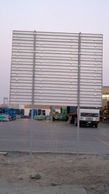Traffic signage
Traffic signage plays a crucial role in ensuring road safety and providing clear communication to drivers and pedestrians on the road. These signs convey important information, regulations, warnings, and guidance to help manage traffic flow and prevent accidents. Here are some commonly recognized traffic signs:
-
Regulatory Signs:
-
-
Stop sign: Indicates that drivers must come to a complete stop.
-
Yield sign: Instructs drivers to yield the right-of-way to oncoming traffic.
-
Speed limit sign: Displays the maximum speed allowed on a particular road.
-
One-way sign: Indicates that traffic flows in only one direction.
-
No entry traffic signs: Prohibits entry to vehicles in a particular direction or area.
-
-
Warning Signs:
-
-
Curve ahead sign: Warns drivers of an upcoming curve in the road.
-
School zone sign: Alerts drivers to the presence of a school or school crossing.
-
Deer crossing sign: Indicates areas where deer or other wildlife are known to cross the road.
-
Slippery road sign: Notifies drivers of potentially slippery conditions ahead.
-
Pedestrian crossing sign: Indicates a designated area for pedestrians to cross the road.
-
-
Guide Signs:
-
Route markers: Display numbers or letters to identify specific routes or highways.
-
Exit signs: Provide advance notice of upcoming exits on highways.
-
Destination signs: Indicate directions and distances to various cities, towns, or landmarks.
-
Services signs: Inform drivers of nearby facilities such as rest areas, gas stations, or hospitals.
-
Information traffic signs: Display additional information about road conditions or specific rules.










